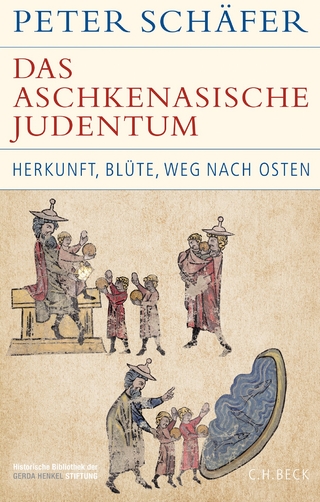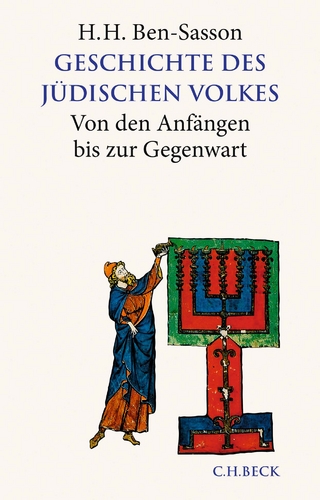
Visions of Unity
State University of New York Press (Verlag)
978-1-4384-3910-5 (ISBN)
This landmark book discusses the thought of Tibetan Buddhist thinker Shakya Chokden (1428–1507) on the two major systems of Mahāyāna Buddhism. Influential and controversial in his own day, Shakya Chokden's thought fell out of favor over time and his writings were eventually repressed, becoming available again only in the 1970s. Yet, his startling interpretations of the core areas of Buddhist thought remain valuable and well worth consideration today. Yaroslav Komarovski has used the twenty-four volumes of Shakya Chokden's collected work to provide a systematic presentation of a central aspect of his thought: a reconciliation of Yogācāra and Madhyamaka. Providing a detailed analysis of the two systems' mutual refutations of each other, Shakya Chokden argues for their fundamental compatibility and shared vision.
In analyzing Shakya Chokden's ideas, Komarovski explores some of the most important issues of both traditional and modern Buddhist scholarship, including contested approaches to the nature of reality, the relationship between philosophy and contemplative practice, inter- and intrasectarian Buddhist polemics, and the nature of consciousness and mental processes.
Yaroslav Komarovski is Assistant Professor of Religious Studies at the University of Nebraska–Lincoln.
List of Tables
Acknowledgments
Introduction
Introducing the Visions of Unity
Introducting the Chapters
1. Life and Works of the Golden Paṇḍita
Political and Religious Landscape of Fifteenth-Century Tibet
Life of the Golden Paṇḍita
Early Years and Education
Becoming a Prolific Writer and Famous Scholar
Settling in the Golden Monastery and Exploring New Horizons
Becoming a Tantric Master and Crystallizing Novel Views
Writings of a Shakya Chokden
Chronological List of Shakya Chokden's Works
Topical Divisions of Shakya Chokden's Works Addressed in This Book
2. The Intellectual Background of Shakya Chokden's Interpretation of Yogācāra and Madhyamaka
Two Tendencies in Yogācāra and Niḥsvabhāvavāda Writings
Basic Elements of Shakya Chokden's Approach to Mahāyāna Systems
Pointed Disappointments: Shakya Chokden's Personal Reflections
Broadening Empty Horizons: A Note on Changes in Shakya Chokden's Views
3. Readjusting Rungs of the Ladder: Revisiting Doxographical Hierarchies
Key Features of Shakya Chokden's Approach to the Buddhist Tenets
Demarcating the Middle: On the Valid Divisions of Madhyamaka and Great Madhyamaka
Self-Emptiness and Other-Emptiness
Self-Emptiness
Other-Emptiness
Bidding Farewell to the Prāsagika/Svātantrika Division?
Are There Two Types of Yogācāra Madhyamaka?
Are There Any Cittamātra Followers Around?
Expanding they Mādhyamika Camp
4. Through Broken Boundaries to New Enclosures: Reconciling Yogācāra and Madhyamaka
Differences between Alīkākāravāda and Satyākāravāda
The Heart of the Matter: Probing the Alīkākāravāda/Niḥsvabhāvavāda Distinction
A New Look at the Old Origins: Distinctions of Madhyamaka Stemming from Interpretations of the Second and Third Dharmacakras
Looking at the Second and Third Dharmacakras through the Eyes of the Madhyamaka Founders
Position of Alīkākāravāda
Position of Niḥsvabhāvavāda
Positions of Later Mādhyamikas
Steering the Middle Way between the Two Conflicting Middle Ways: The Art of Not Taking Sides
5. Explorations in Empty Luminosity: Shakya Chokden's Position on Primordial Mind
Facing the Reality of Primordial Mind
Primordial Mind and the Question of Existence
The Question of Withstanding Analysis
Does True Existence Have to Be Neglected in Order to Abandon Grasping at It?
Primordial Mind as an Impermanent Phenomenon
(Un)linking the Self-Cognizing Primordial Mind and Dualistic Consciousness
Does Self-Cognition Cognize Itself?
Primordial Mind as the Bridge between Yogācāra and Tantra
Primordial Mind as the Focus of all Mahāyāna Paths
Different but Concordant Approaches to Primordial Mind in Alīkākāravāda and Tantra
A Powerful Ally: Using the Tantric View of Reality for Support
Conclusion: The Grand Unity—Shakya Chokden's Middle Way
Glossary of Buddhist Terms: English-Tibetan with Sanskrit Parallels
Spellings of Tibetan Names and Terms
Notes
Bibliography
Index
| Erscheint lt. Verlag | 2.7.2012 |
|---|---|
| Zusatzinfo | Total Illustrations: 3 |
| Verlagsort | Albany, NY |
| Sprache | englisch |
| Maße | 152 x 229 mm |
| Gewicht | 644 g |
| Themenwelt | Geschichte ► Teilgebiete der Geschichte ► Religionsgeschichte |
| Geisteswissenschaften ► Religion / Theologie ► Buddhismus | |
| Sozialwissenschaften ► Soziologie ► Spezielle Soziologien | |
| ISBN-10 | 1-4384-3910-5 / 1438439105 |
| ISBN-13 | 978-1-4384-3910-5 / 9781438439105 |
| Zustand | Neuware |
| Haben Sie eine Frage zum Produkt? |
aus dem Bereich


